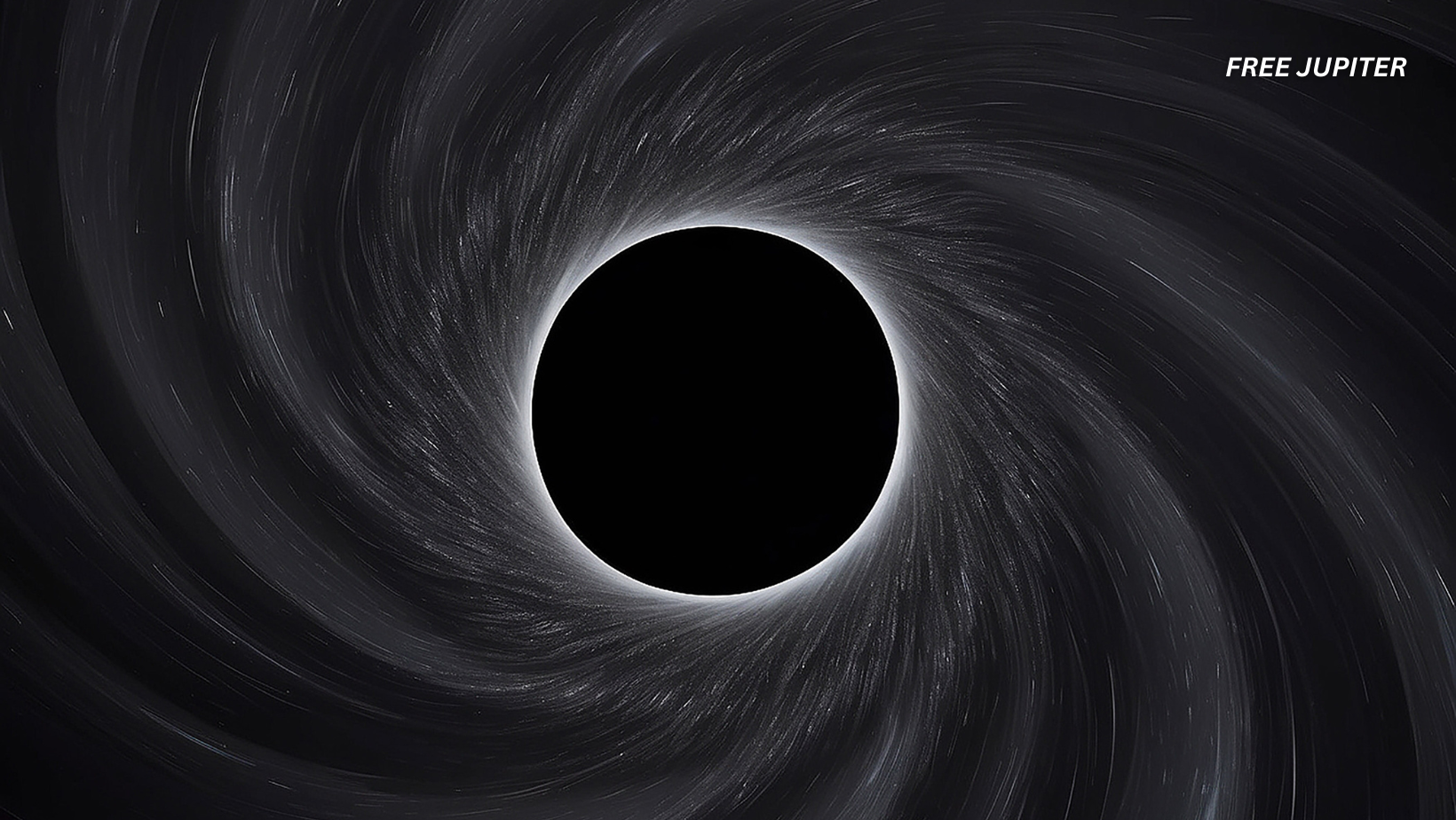When two black holes crash into each other, the result is already the stuff of cosmic drama. But for the first time, scientists have not only detected the merger—they’ve heard the “kick” that sent the new black hole flying across the Universe. Using ripples in spacetime known as gravitational waves, researchers have measured both the speed and direction of this powerful recoil.
The discovery came from a 2019 event charmingly named GW190412 (astronomy loves its codes). In that collision, the merged black hole shot off at more than 50 kilometers per second—about 112,000 miles per hour. To put that into perspective, at that speed, you could travel from New York to Los Angeles in under a minute.
Gravitational Waves: Cosmic Ripples We Can Actually “Hear”
To understand why this is exciting, you need to picture spacetime as a giant, invisible fabric. When two massive objects—like black holes—spiral toward each other, they distort this fabric. Those distortions ripple outward, much like waves on a pond when you toss in a stone. These ripples are called gravitational waves, and they move at the speed of light.
Scientists only began detecting them in 2015, but in just ten years, observatories like LIGO, Virgo, and KAGRA have recorded hundreds of these spacequakes. Each detection is like listening to a cosmic soundtrack. By carefully decoding the “notes,” scientists can figure out the size, spin, and even the personality quirks of the black holes involved.
Juan Calderón-Bustillo, an astrophysicist, puts it in musical terms: black hole collisions are like an orchestra playing a piece of music. Depending on where you’re sitting in the audience, you hear a different blend of instruments. Likewise, depending on our cosmic “seat,” we pick up different gravitational wave signals.
The Kick: When Space Objects Don’t Play Fair
Normally, when two black holes merge, you’d expect their gravitational pulls to balance out nicely. But if the collision is lopsided—say, one black hole is way heavier than the other—the final product doesn’t just sit still. It gets a kick, almost like a cue ball ricocheting across a pool table.
This kind of recoil, known as a natal kick, can happen in other violent space events too, like exploding stars. The uneven energy distribution acts like a cosmic shove, sending the newborn black hole or neutron star flying off in a particular direction.
Back in 2018, Calderón-Bustillo and his team predicted that this effect could be measured in gravitational wave data—if the conditions were just right. What they needed was a mismatched pair of black holes colliding. A year later, they got their wish.
The Odd Couple: GW190412’s Uneven Pair
The black holes in GW190412 weren’t exactly equals. One was about 30 times the mass of the Sun, while the other weighed in at just 8.4 solar masses. That’s like pitting a sumo wrestler against a lightweight boxer. The imbalance stretched out the collision signal, which made it easier for scientists to study in detail.
From this event, the team was able to calculate both the speed and the angle of the recoil. The resulting black hole was flung fast enough that—if it happened to be inside a dense star cluster—it could have escaped entirely, racing off into intergalactic space. While astronomers can’t confirm whether it was in such a cluster, the math suggests it’s a real possibility.
Why Does This Matter?
Being able to measure these kicks isn’t just a neat cosmic trick. It gives scientists a powerful new tool for studying black hole environments. For example, if a black hole is kicked out of a star cluster, it changes how many black holes remain there—and that affects the chances of future collisions.
Astrophysicist Samson Leong points out that recoiling black holes moving through dense regions, like the gas clouds around active galaxies, might produce flares of light. If we can match those flares to gravitational wave events, it would confirm that black holes sometimes leave behind visible fireworks. Knowing the direction of the kick helps distinguish real matches from random coincidences.
A Decade of Listening to the Universe
It’s hard to believe that the first gravitational wave detection only happened in 2015, courtesy of LIGO (Laser Interferometer Gravitational-Wave Observatory). At the time, it was hailed as a Nobel-worthy breakthrough, proving Einstein’s century-old prediction correct. Since then, we’ve gone from hearing one cosmic “chirp” to recording hundreds of them, each one adding a piece to the puzzle of how black holes live, merge, and sometimes run away.
The ability to reconstruct not just the mass and spin, but the actual three-dimensional motion of a black hole billions of light-years away, is a leap forward. As Koustav Chandra from Penn State put it: “This is one of the few times in astrophysics where we’re not just detecting something—we’re reconstructing its full 3D motion using only ripples in spacetime.”
Read more: Gravitational Wave Detector Has Confirmed Einstein and Hawking’s Black Hole Theories
Related Mystery: Runaway Black Holes
This discovery also ties into a fascinating cosmic mystery: runaway black holes. Astronomers have spotted signs of black holes speeding through space, leaving trails of newborn stars in their wake. One dramatic candidate was announced in 2023, where a black hole seemed to have been ejected from its galaxy entirely, racing through intergalactic space at breakneck speed.
Natal kicks from uneven collisions might help explain how such wanderers are born. If a black hole can be kicked hard enough, it might escape its home galaxy altogether, roaming the Universe like a lone wolf. Understanding the mechanics of these kicks could tell us how common these space runaways really are.
Another Related Story: The Orchestra of the Cosmos
Gravitational waves don’t just reveal kicks. They’ve also taught us that black hole collisions are surprisingly varied. Some are loud and short, like a cymbal crash; others are drawn-out, like a cello hum. Scientists can now piece together these “songs” to create a catalog of cosmic events, almost like building a playlist of the Universe’s greatest hits.
This musical metaphor isn’t just poetic—it’s practical. By comparing signals across detectors worldwide, scientists can triangulate the origin of an event, much like how your brain pinpoints a sound by comparing input from both ears. With more detectors coming online in the next decade, the orchestra will only get louder and clearer.
What’s Next?
The measurement of a black hole’s recoil is just the beginning. Future gravitational wave detections may allow us to track black holes as they move, study how often they get ejected from clusters, and even figure out if they’re responsible for certain mysterious light shows in space.
As detectors become more sensitive, scientists may eventually detect other exotic kicks—like neutron stars being punted around after supernova explosions. Each discovery will add to the growing field of gravitational wave astronomy, which is quickly becoming one of the most exciting frontiers in science.
For now, though, it’s enough to marvel at the fact that we can hear and measure the “footsteps” of black holes billions of light-years away. What once sounded like pure science fiction is now just another day at the office for astrophysicists.
Read more: New Research Shows Black Holes Are Cosmic Tunnels, Not Bottomless Voids
Final Thought
The Universe is a noisy place—but until recently, we were deaf to one of its most important symphonies. Gravitational waves have opened up a new sense, letting us not just see the cosmos, but listen to it. And in that cosmic orchestra, sometimes you catch the sound of a black hole being kicked so hard it leaves home forever.
That’s the kind of drama you don’t need Hollywood for—the Universe provides its own blockbusters.
In a way, this discovery also humbles us. Our entire species, confined to a small planet circling an average star, can now measure the movements of objects billions of light-years away using nothing more than faint tremors in spacetime. It’s a reminder that while humans often argue about borders and boundaries here on Earth, we’ve managed to reach out and listen to the echoes of the cosmos itself.
It also sparks a hopeful question: if we can hear black holes being born and flung through the Universe, what else might we eventually detect? Perhaps the faint whispers of the very first stars, or the gravitational aftershocks of the Big Bang itself. Each discovery nudges us closer to answering the oldest human question—where do we come from?—while reminding us that the story of the Universe is still being written, one ripple at a time.
Featured image: Freepik.
Friendly Note: FreeJupiter.com shares general information for curious minds. Please fact-check all claims and double-check health info with a qualified professional. 🌱










